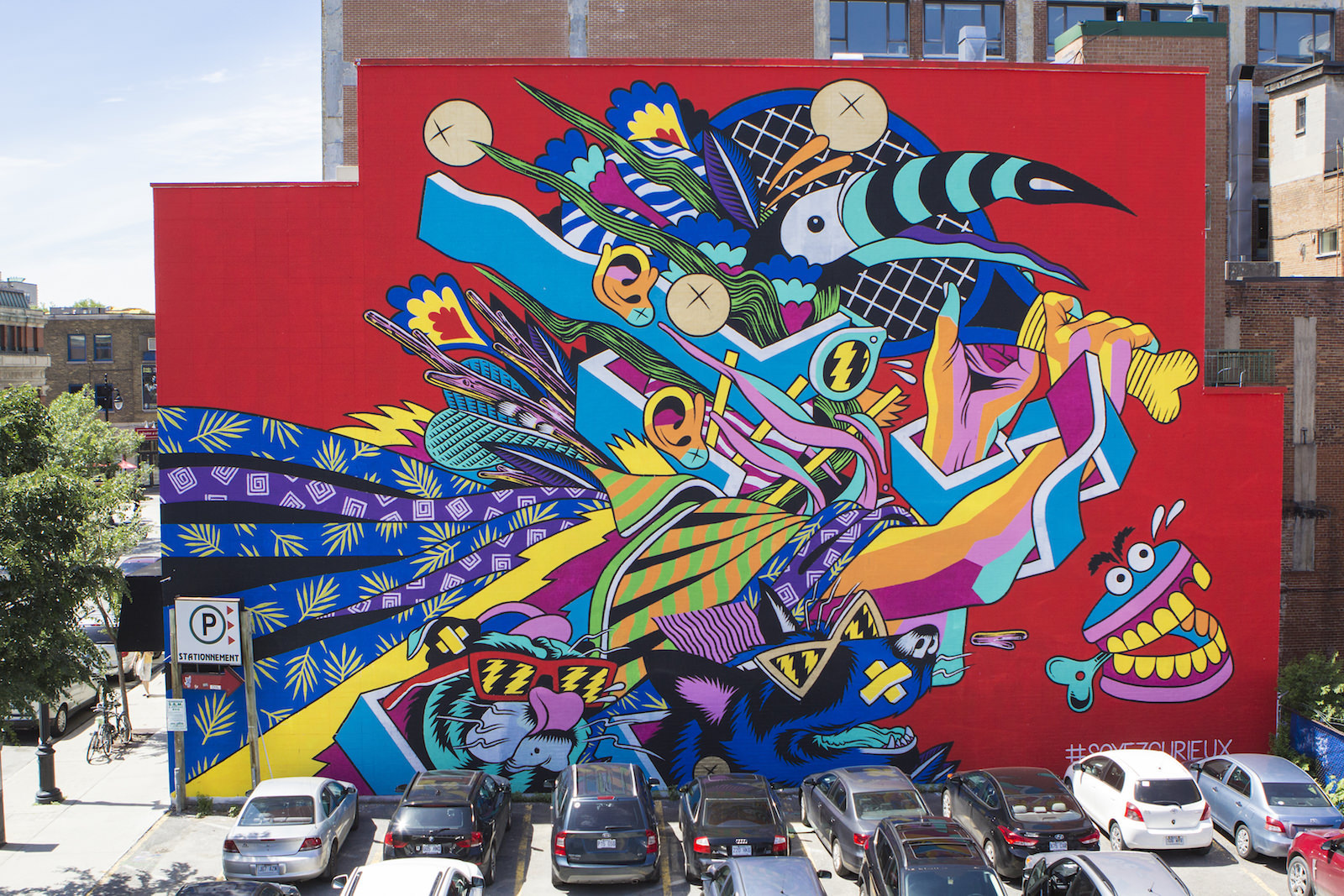
Redefining Montreal’s perspective on public art
Mural Festival's third year sets the stage for a bright (and colourful) future.
Alive in the streets of Montreal is a culture brewing with talented artists, using brick walls as their canvases for art on a monumental scale. Prolific artists like Tava, Miss Me, 123klan, What is Adam, Tim Bernard, Omen, and Stikki Peaches, to name a few, have been pushing the street art scene for years both locally and abroad.
While artists have been thriving in the local scene, the city lacked an element of international recognizability as carried by other cities, like Miami, whose prestige most accredit to Art Basel, London, São Paulo, Berlin or Los Angeles (whose thriving graffiti and street art scene has put them all on the map as street art hubs.) That all changed three years ago when the marketing agency LNDMRK swooped in to create Mural Festival.
Coming off its 3rd year, Mural celebrates both local and international talent, enabling different artists of different styles from around the globe to create murals in Montreal. But what does Mural really represent? Is it street art? Is it graffiti? Or is it something else? Mural’s co-founder Andre Bathalon helps clear everything up: “The word street art has a different definition for everybody who you ask. This umbrella term means graffiti, stencils, tagging, wheat paste, discrete art, public art and so much more. We decided to capitalize on the words ‘muralism’ and ‘public art’ because it’s the perfect gateway for the spectrum of street art. Murals become a lure for people to come to the Main, Boulevard Saint-Laurent, to appreciate free accessible artwork, “It’s the perfect gateway if you want to deepen your curiosity of street art.”
Each year the festival provides an environment for all sorts of creatives spirits to come and partake in Mural’s mission to democratize art, shaping how the public perceives and experiences public art. No longer seen as the art of thugs, street art has taken on a new space to discuss political ideas and artistic interventions on an international scale that only seems to be growing.
“We’re starting to establish a strong voice with international dialogue in Montreal. Mural festival is the most important aspect of drawing international attention to a specific form of art here. It’s becoming a beacon of light for a lot of people,” explains Jason Botkin, an established artist in Montreal as well as the Co-founder and Director of En Masse. French for “as a whole,”
En Masse is a Montreal based art collective known for it’s duo-tone, black and white drawings scattered around the city. “We have more and more international artists coming in and contributing to our own artistic landscape and street art. Already word on the street internationally is a lot of people are increasingly setting their sights on Montreal and want to come contribute to what’s happening here.”
Projects like En Masse, Under Pressure and Mural Festival are what make Montreal a hidden Canadian treasure that’s starting to dip its toes into international water. It’s clear that high quality art is happening in Montreal when the city draws international artists of the likes we’ve seen at Mural.
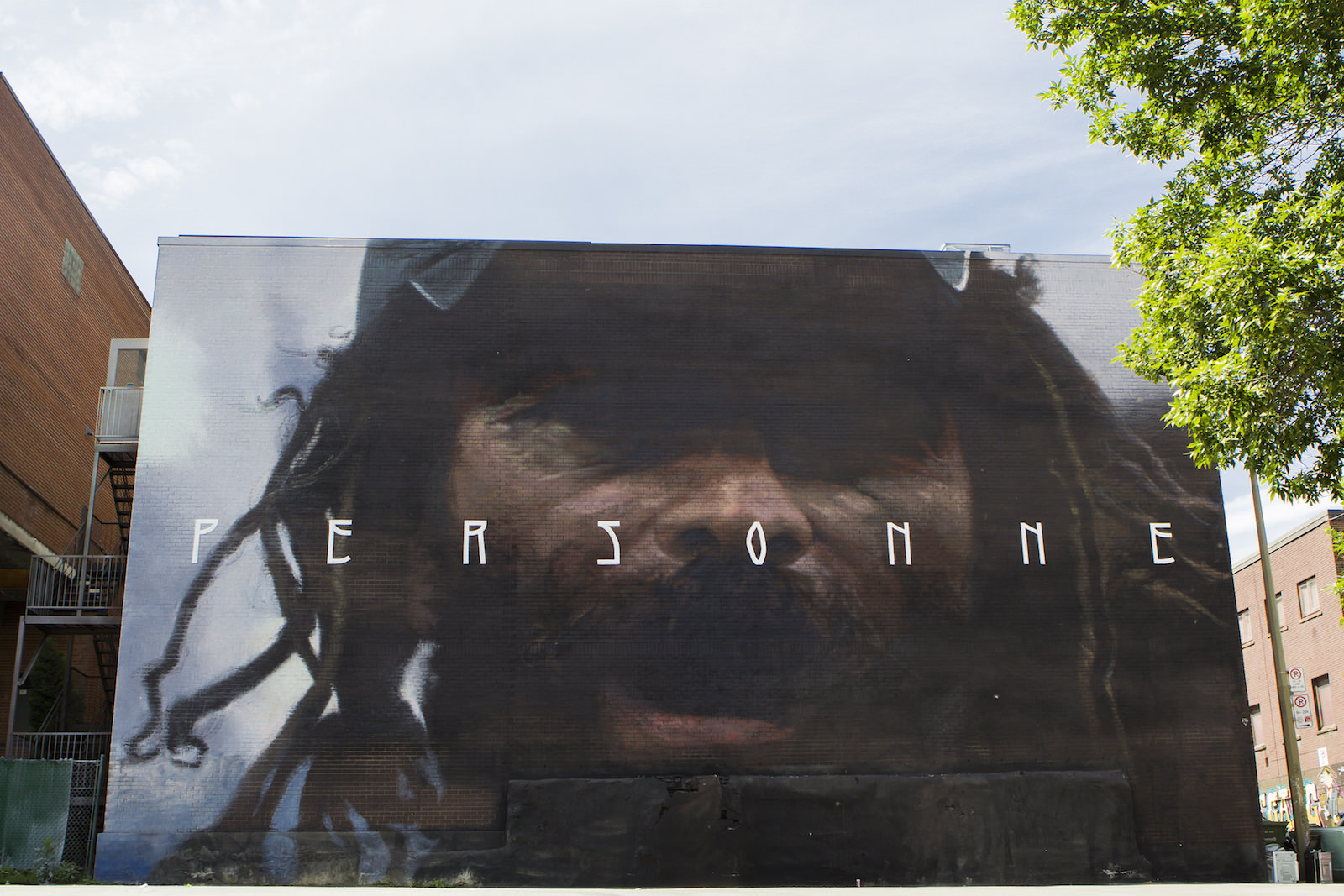
Mural’s largest wall this year was done by Bicicleta Sem Freio, Portuguese for “bike without brakes,” a Brazilian duo comprised of Douglas de Castro and Renato Perreira. They realize the impact a festival like Mural has on the art community: “It’s good for the people who work with art here because they can see what’s happening with art around the world,” explains Douglas de Castro. “And it’s good for the artists because they can show their art and get inspired from different artists and cities. Everybody wins.”
You no longer need to go to a gallery to enjoy artwork because public art has torn down the walls between art and it’s audience, putting them eye to eye. Instead, you can walk down the street and peer up at spectacular murals in your city on a daily basis, opening up a dialogue between spectator, artist and artwork.
“You know the museum hand-behind-the-back Sasquatch walk? Public art breaks that down. It opens up the dialogue between artist and viewer. It allows people to claim ownership of the art,” tells Cyrcle, a two-man Los Angeles collective made up of American artists David Leavitt (Davey Detail) and David Torres (Rabi). The duo put on an indoor exhibit called “Nothing Exists!” during Mural Festival at Station 16, a Montreal art gallery influenced by illustration, design, pop culture, graffiti and street art.
While some artists enjoy the concept of public ownership in street art, some find its transient and owner-less nature appealing. Jason Botkin of En Masse sees murals as the ephemeral face of public art. “There’s something very poetic about street art. Street art violates the concept of creative scarcity when a wall disappears and another comes up. You may have loved the one before but it’s really cool sometimes to let it go, let it change and breathe. It’s not something you own.”
In the public sphere a narrative gets built around public art; increasingly murals are becoming nostalgic landmarks to the community. Some people take ownership of the art, other’s reject that idea. At the end of the day it has a way of stimulating the conversation about how we take ownership over the areas we live in. Projects and festival like Mural are allowing people to subscribe to the process and become a part of it.
“One of the objectives of the festival is to democratize the art in a street context. We want to show people to develop their third eye. To look not only at walls but to look at all the small surfaces people use,” tells Andre. “There is an invisible dialogue going on in the street. Tags, stickers, whatever it is, there is stuff happening. The streets and the alleyways are a soap opera. Public art is a gateway; from there everything is possible.”
With no concrete boundaries defining the spectrum of public art, it’s constantly evolving into new dimensions. This invisible dialogue happening in the streets allows the public the opportunity to be transported to whatever world the artist creates. Art reveals our human nature and increasingly the community is taking ownership of that.
Alive in the streets of Montreal is a culture brewing with talented artists, using brick walls as their canvases for art on a monumental scale. Prolific artists like Tava, Miss Me, 123klan, What is Adam, Tim Bernard, Omen, and Stikki Peaches, to name a few, have been pushing the street art scene for years both locally and abroad.
While artists have been thriving in the local scene, the city lacked an element of international recognizability as carried by other cities, like Miami, whose prestige most accredit to Art Basel, London, São Paulo, Berlin or Los Angeles (whose thriving graffiti and street art scene has put them all on the map as street art hubs.) That all changed three years ago when the marketing agency LNDMRK swooped in to create Mural Festival.
It’s the perfect gateway if you want to deepen your curiosity of street artComing off its 3rd year, Mural celebrates both local and international talent, enabling different artists of different styles from around the globe to create murals in Montreal. But what does Mural really represent? Is it street art? Is it graffiti? Or is it something else? Mural’s co-founder Andre Bathalon helps clear everything up: “The word street art has a different definition for everybody who you ask. This umbrella term means graffiti, stencils, tagging, wheat paste, discrete art, public art and so much more. We decided to capitalize on the words 'muralism' and 'public art' because it’s the perfect gateway for the spectrum of street art. Murals become a lure for people to come to the Main, Boulevard Saint-Laurent, to appreciate free accessible artwork, “It’s the perfect gateway if you want to deepen your curiosity of street art.”
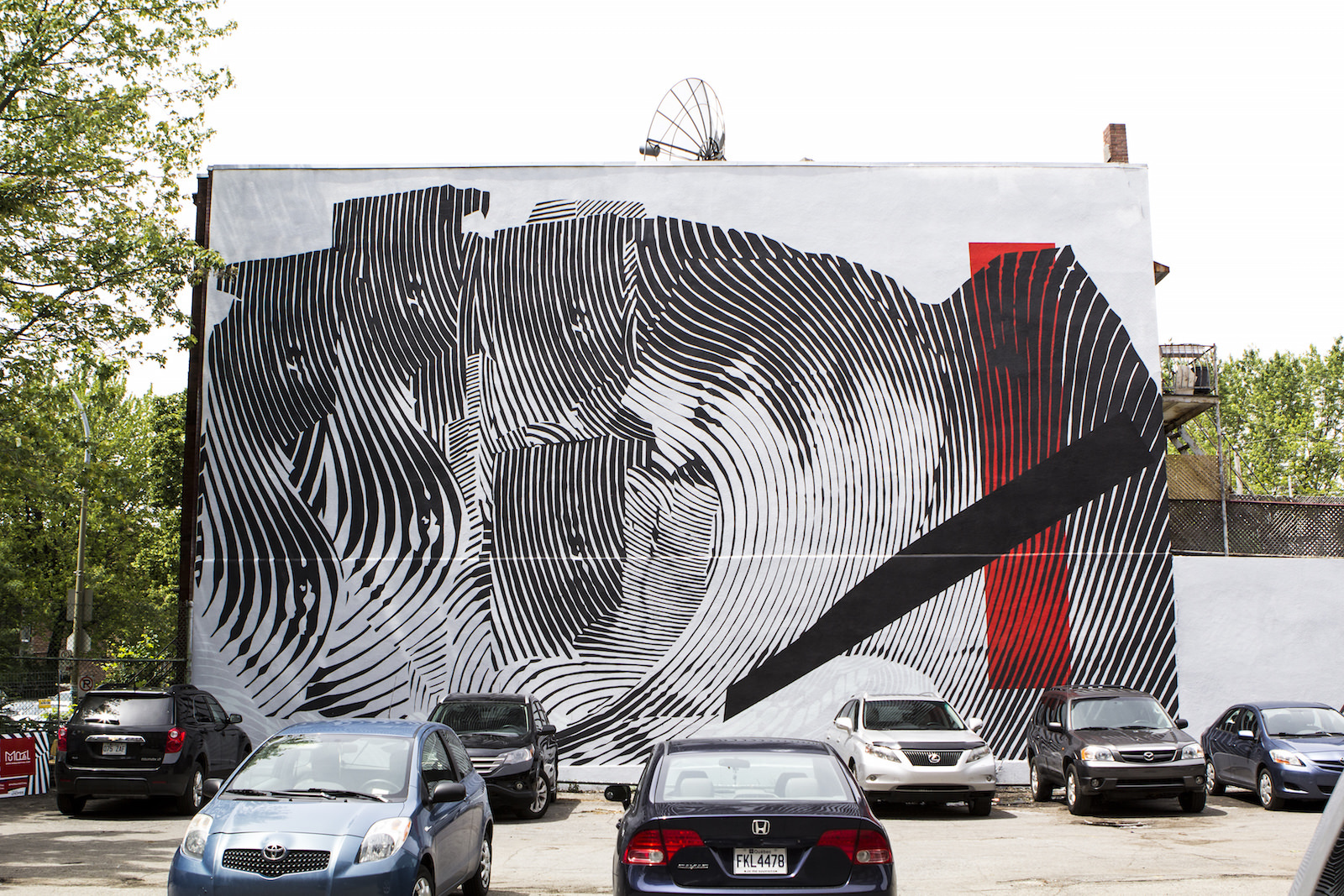
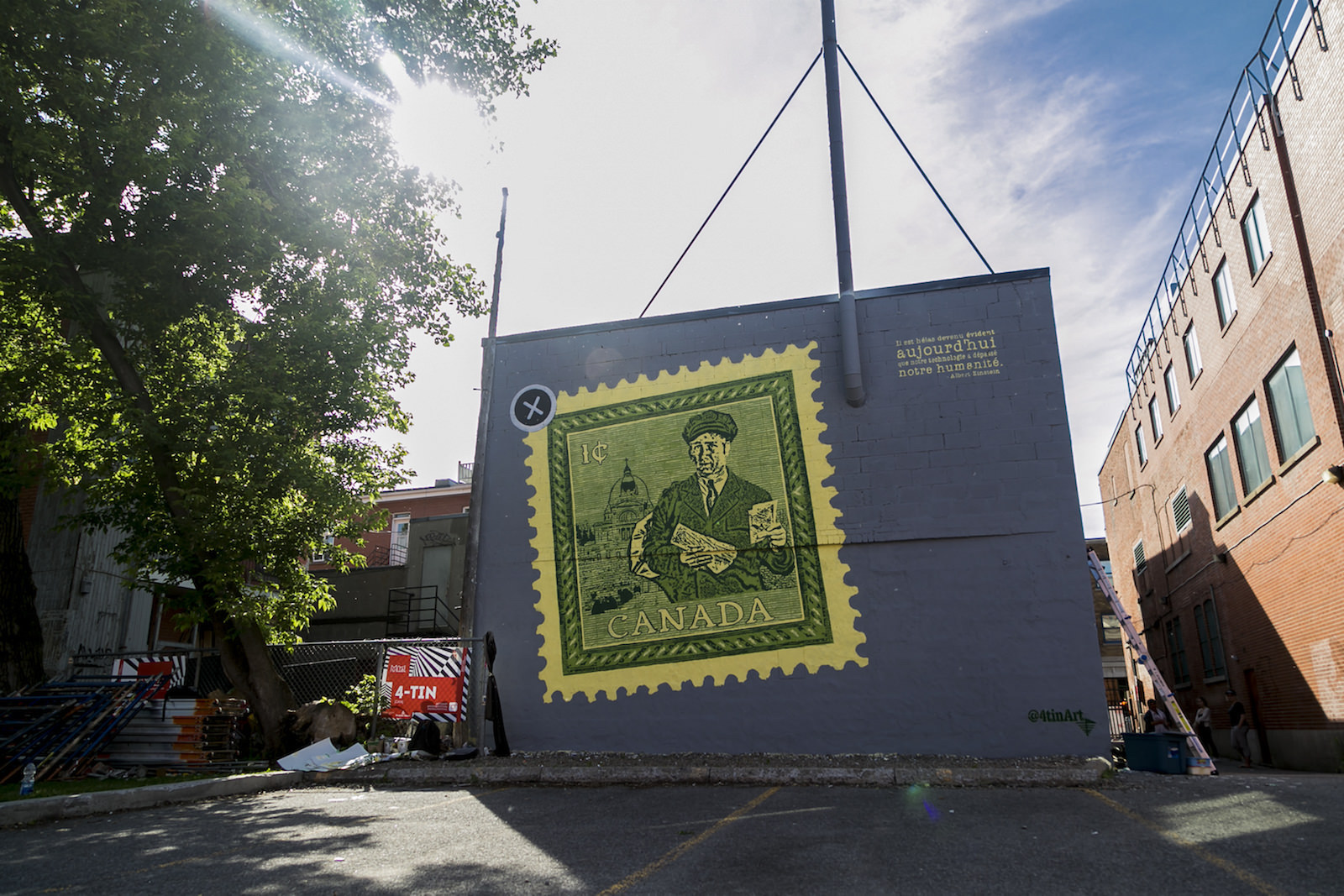
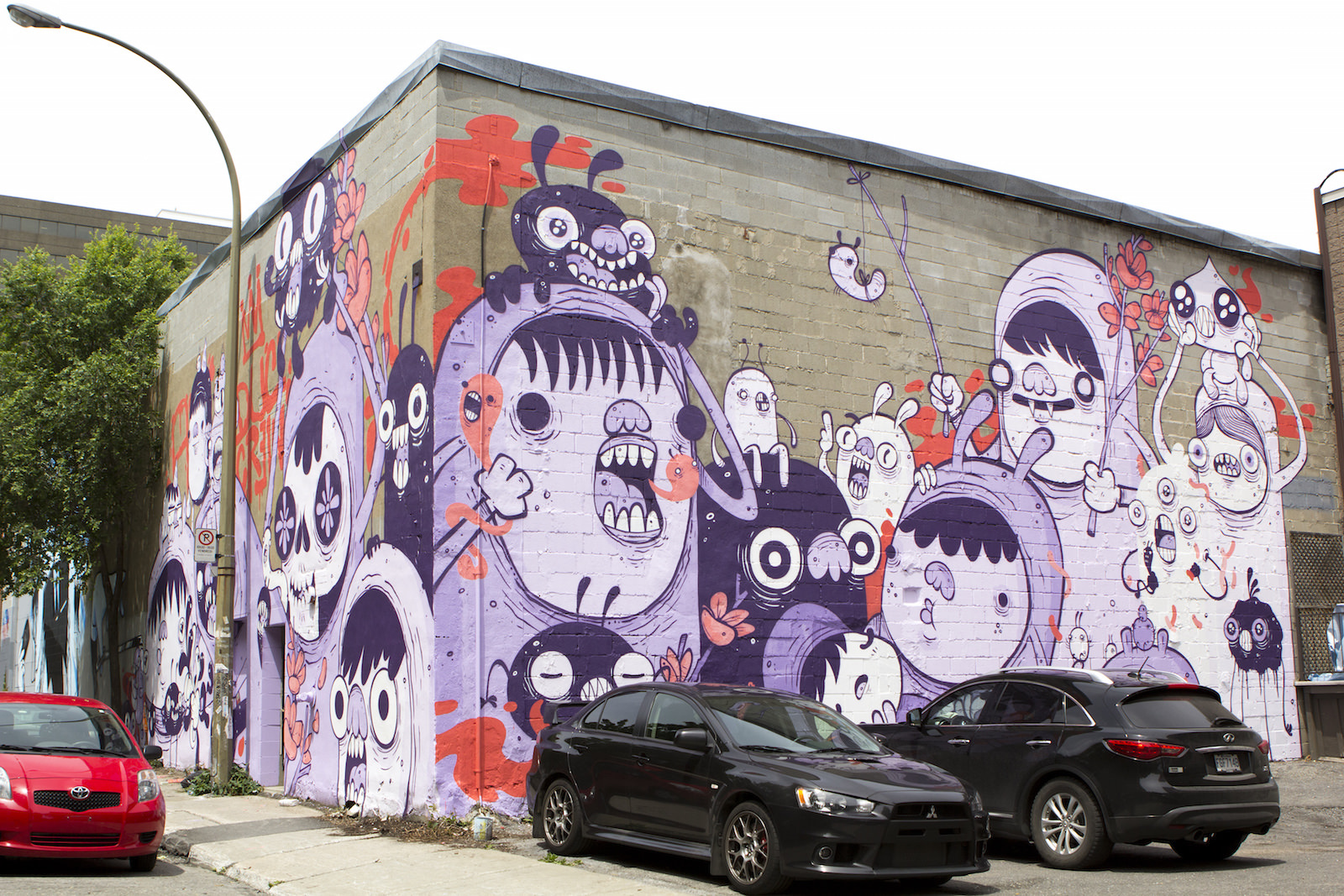


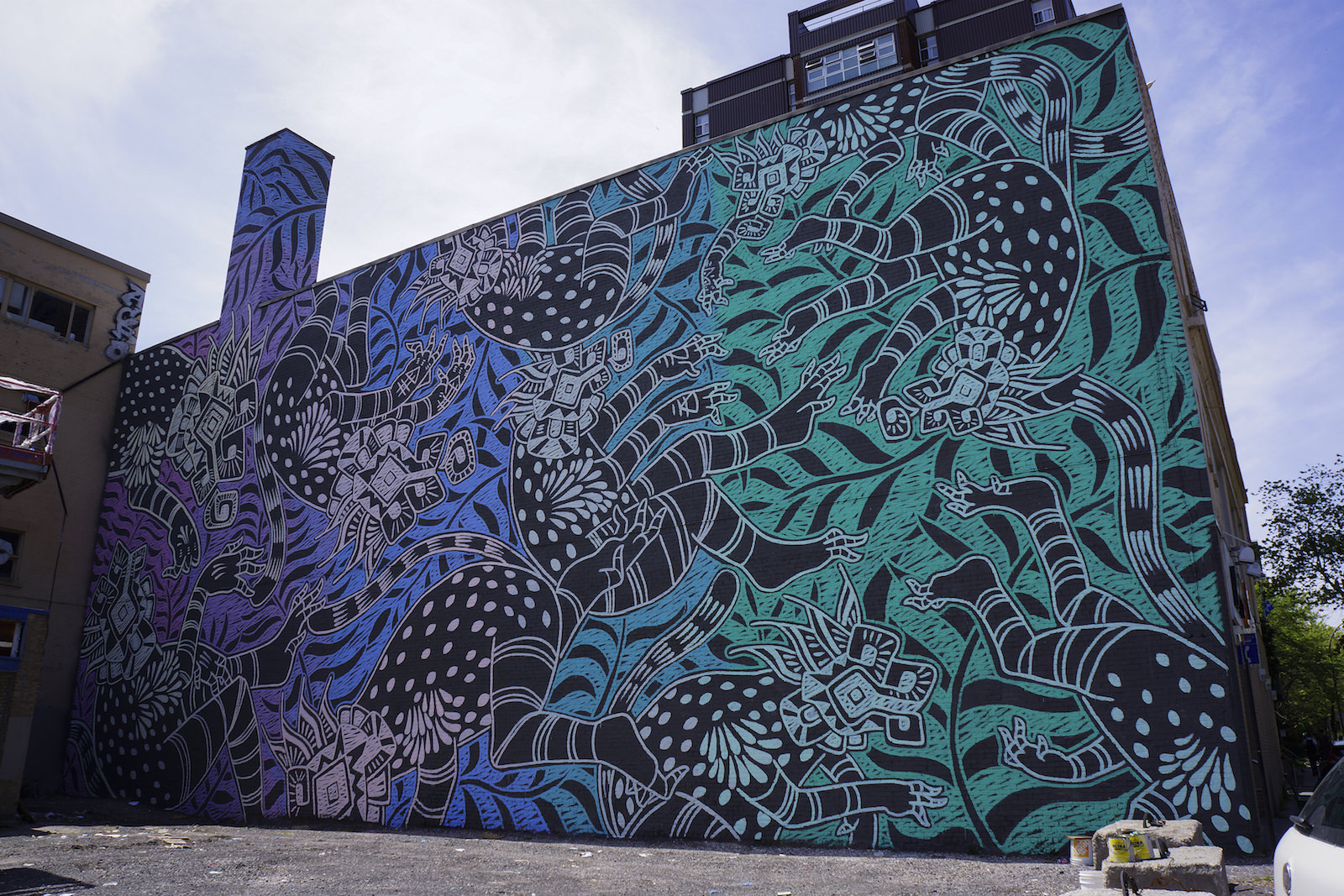
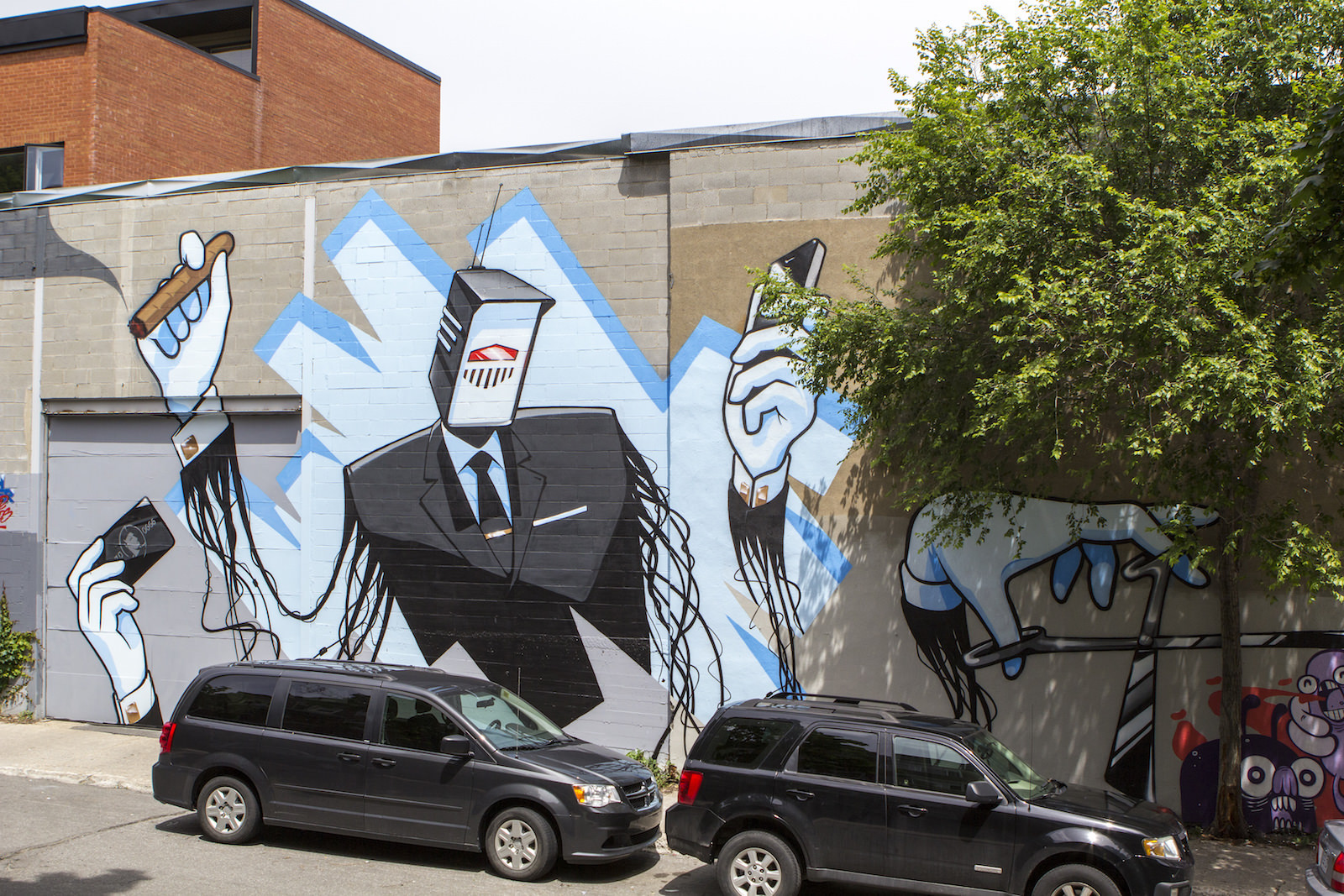
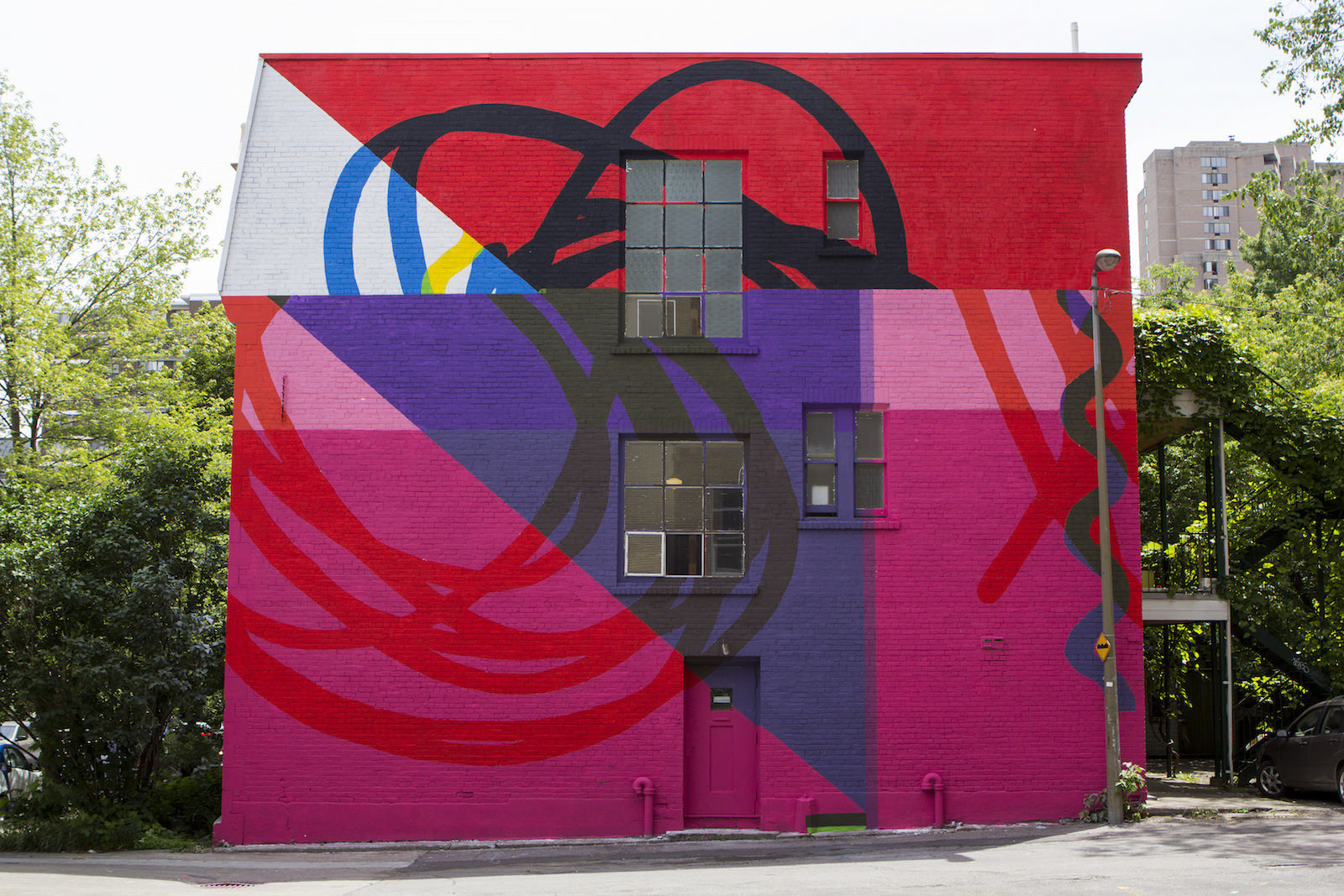
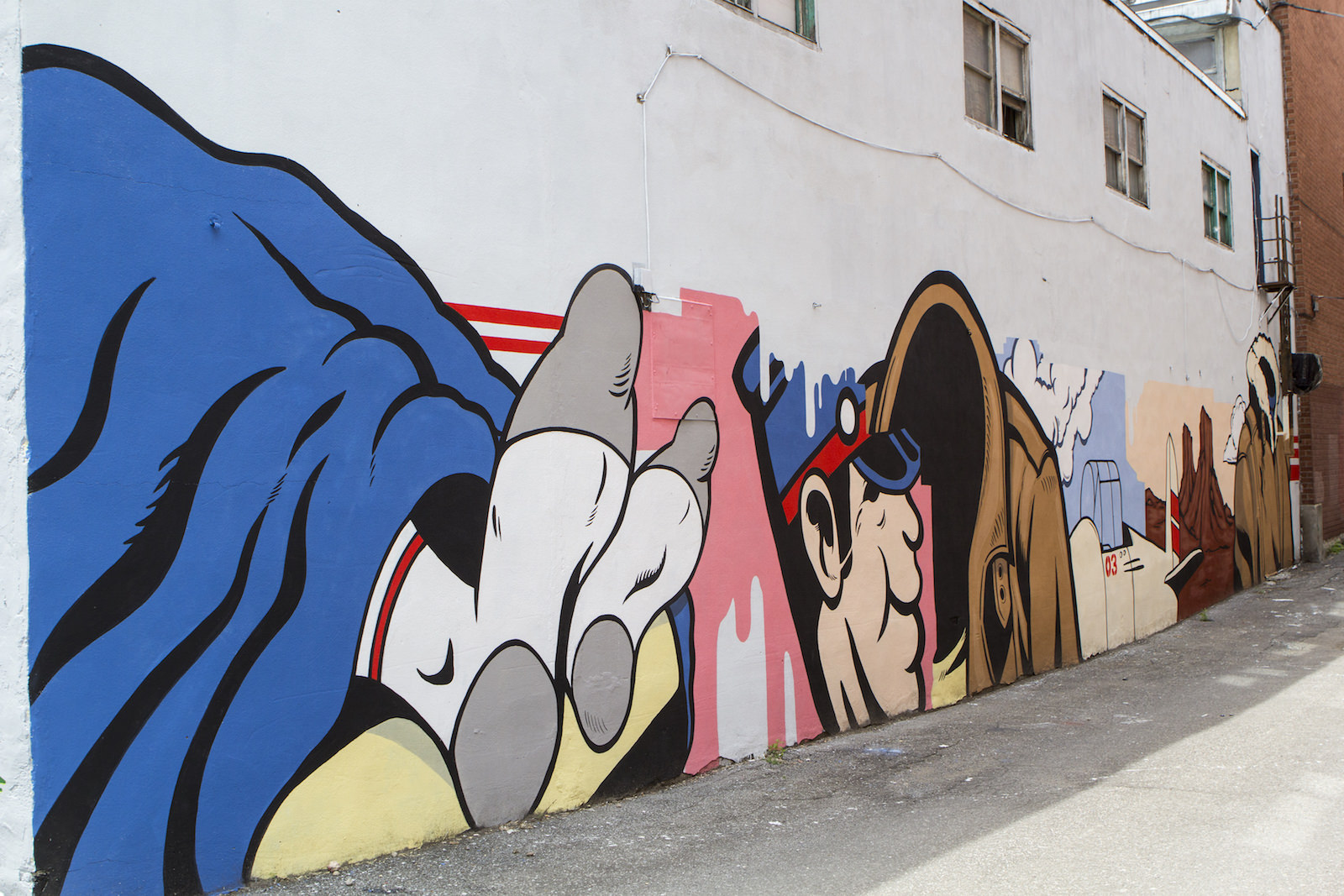
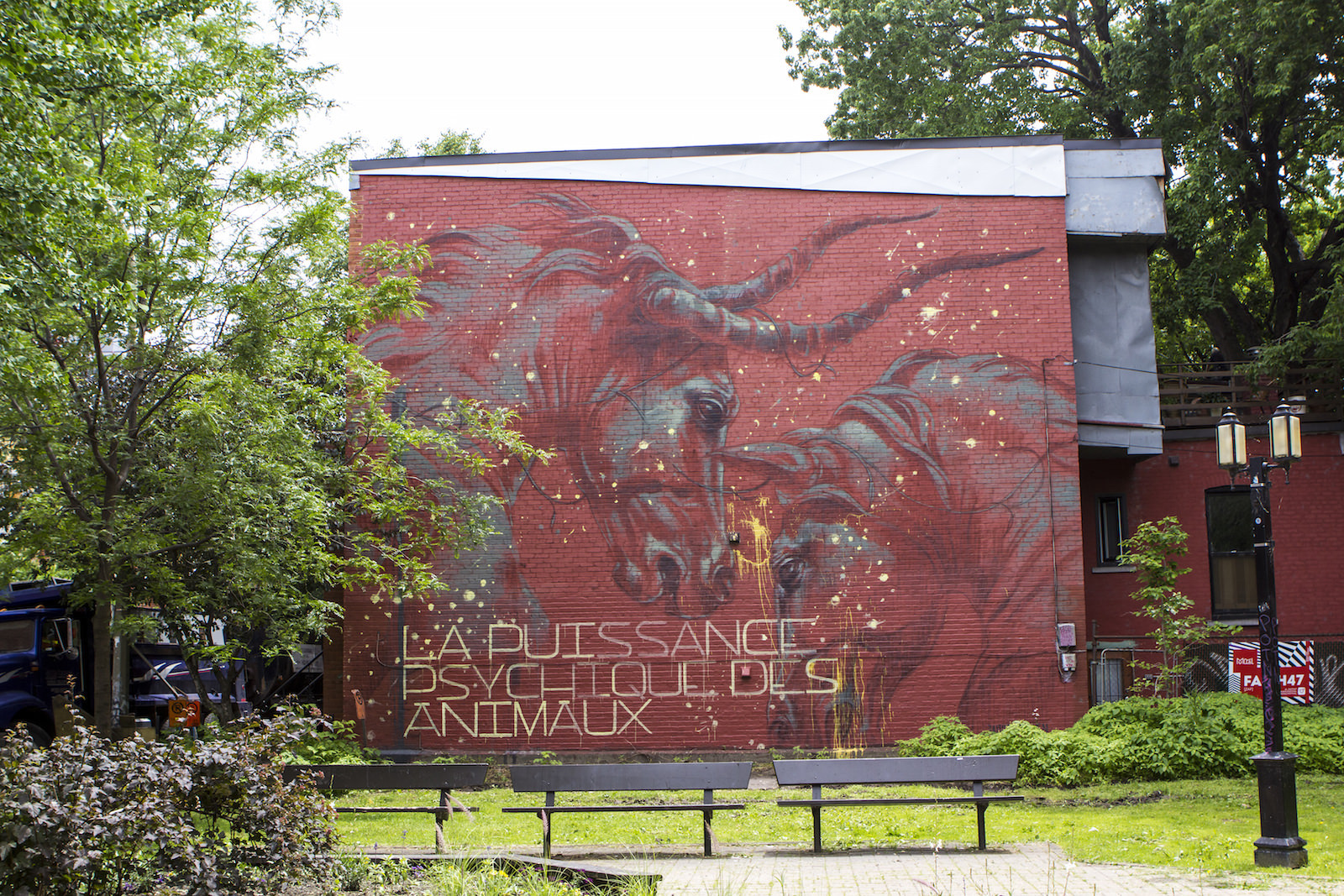
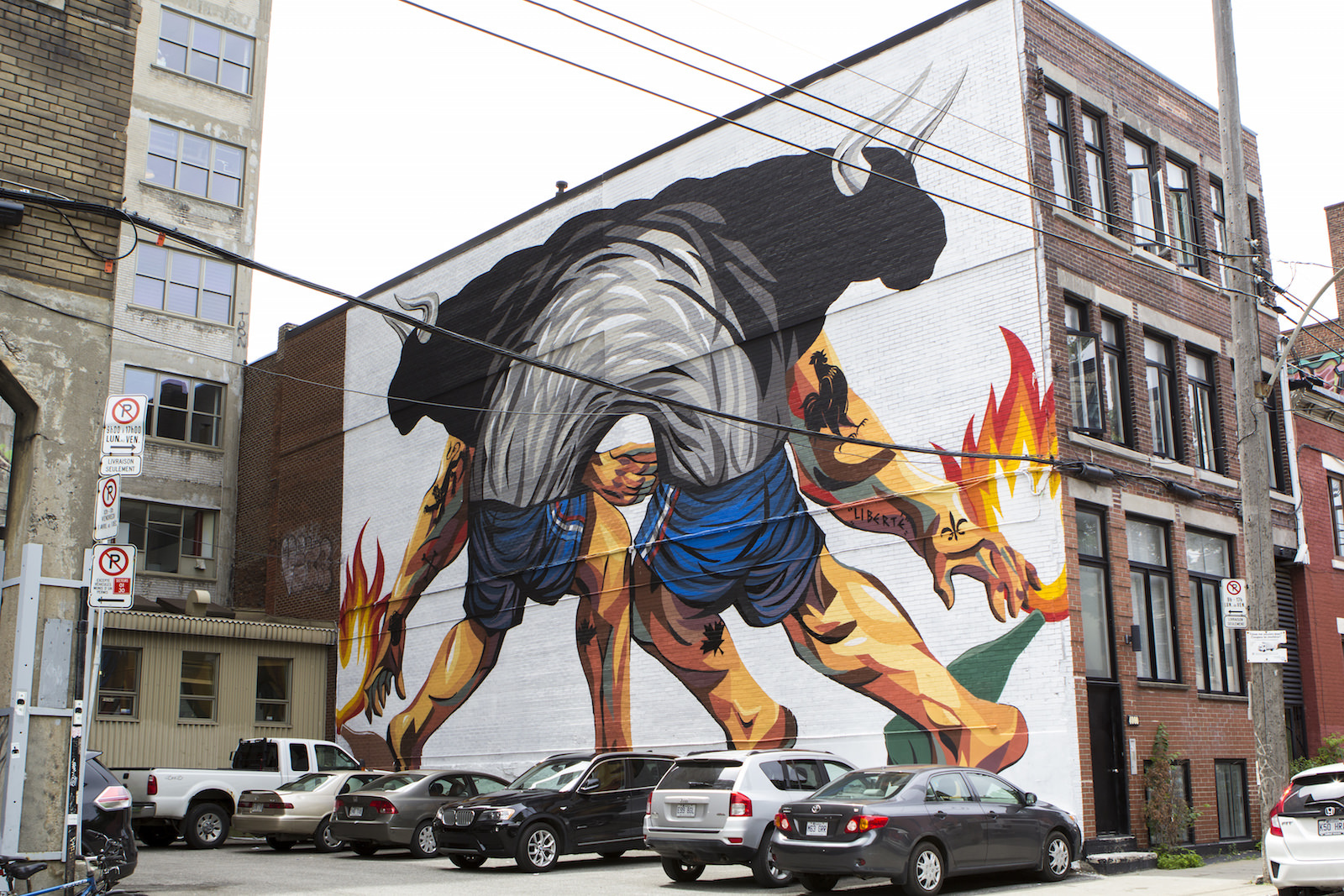

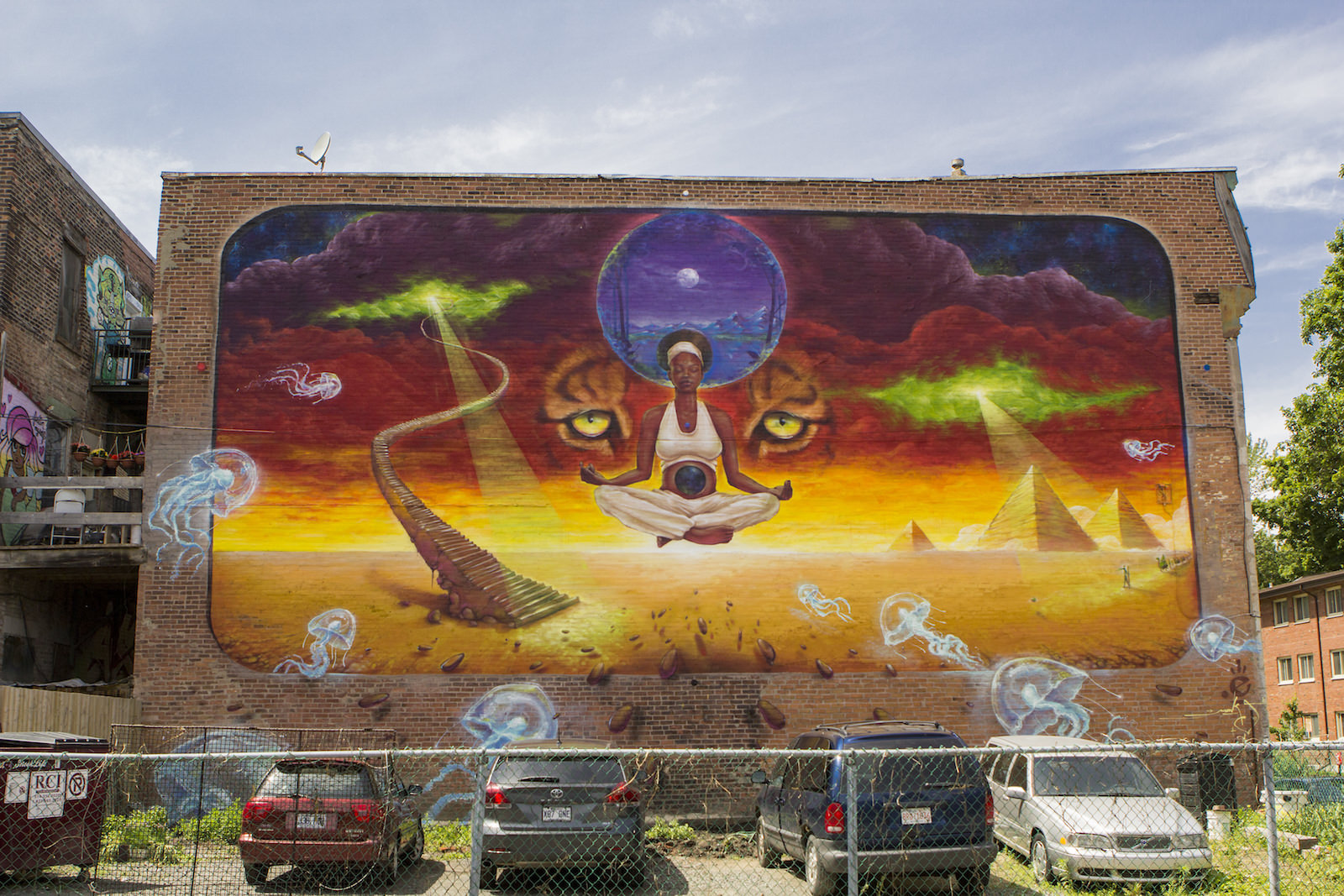
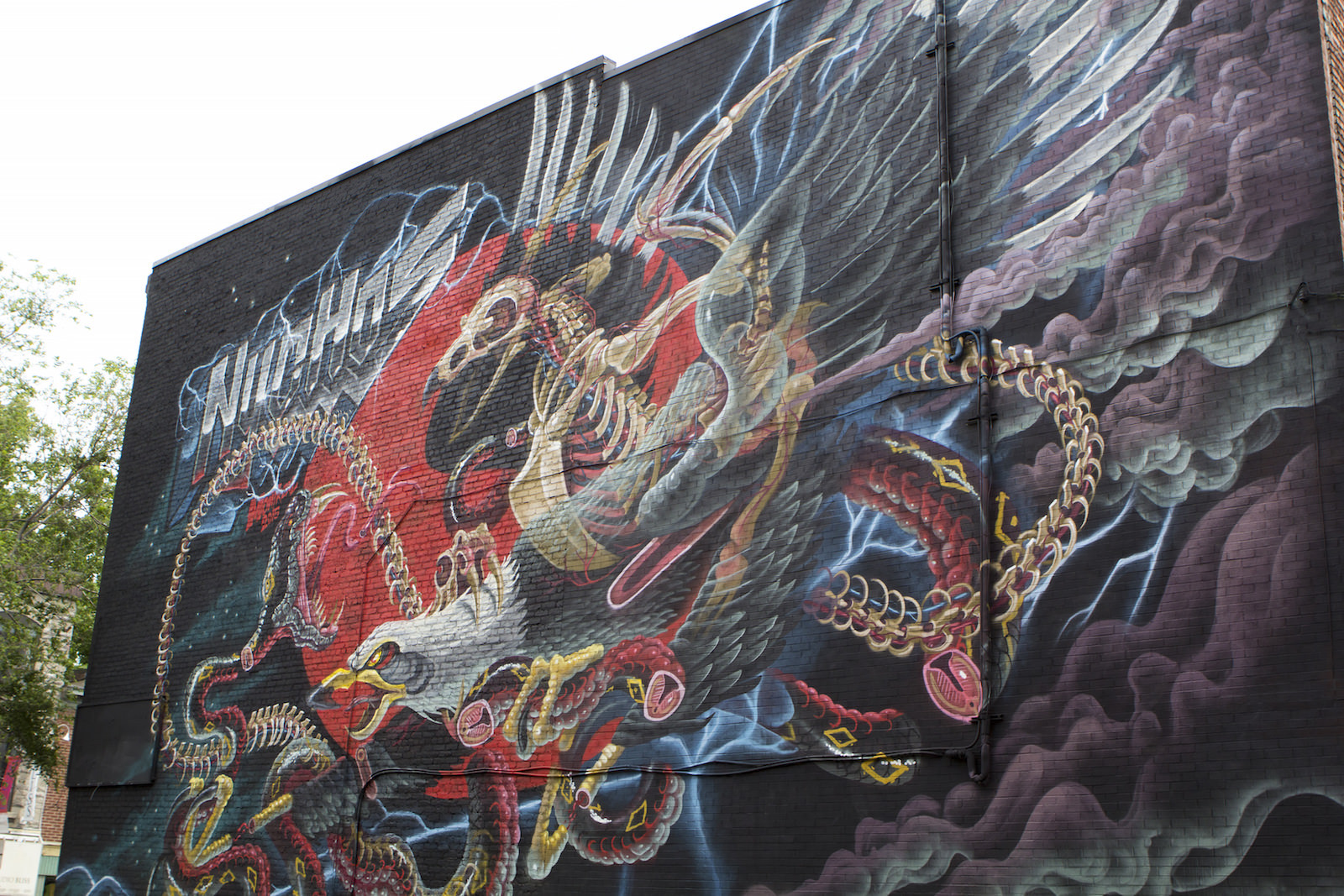
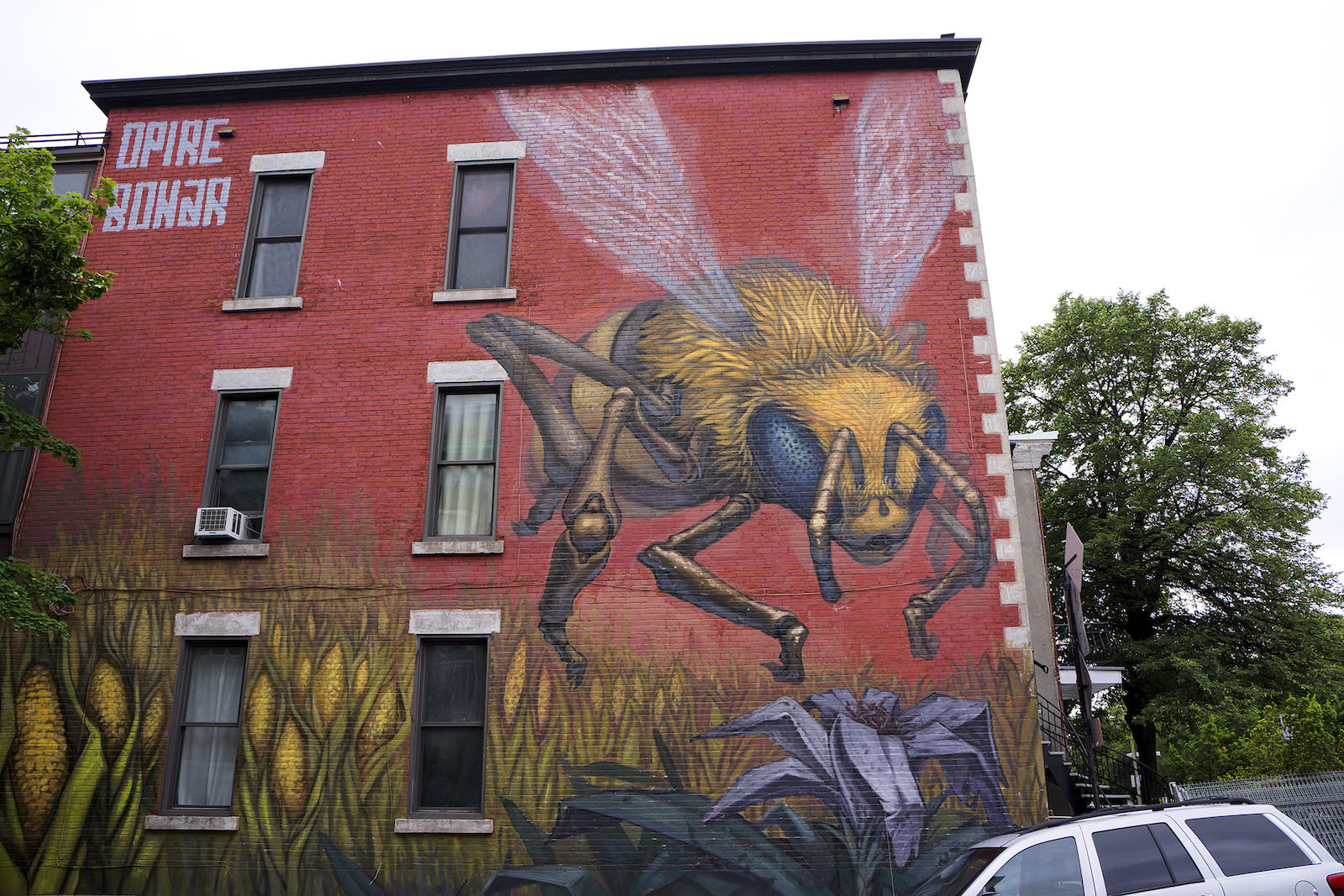 View all images
View all images
photos - Photo: Daniel Esteban
Each year the festival provides an environment for all sorts of creatives spirits to come and partake in Mural’s mission to democratize art, shaping how the public perceives and experiences public art. No longer seen as the art of thugs, street art has taken on a new space to discuss political ideas and artistic interventions on an international scale that only seems to be growing.
“We’re starting to establish a strong voice with international dialogue in Montreal. Mural festival is the most important aspect of drawing international attention to a specific form of art here. It’s becoming a beacon of light for a lot of people,” explains Jason Botkin, an established artist in Montreal as well as the Co-founder and Director of En Masse. French for “as a whole,”
En Masse is a Montreal based art collective known for it’s duo-tone, black and white drawings scattered around the city. “We have more and more international artists coming in and contributing to our own artistic landscape and street art. Already word on the street internationally is a lot of people are increasingly setting their sights on Montreal and want to come contribute to what’s happening here.”
Projects like En Masse, Under Pressure and Mural Festival are what make Montreal a hidden Canadian treasure that’s starting to dip its toes into international water. It's clear that high quality art is happening in Montreal when the city draws international artists of the likes we've seen at Mural.

photo - Photo: Daniel Esteban
Mural’s largest wall this year was done by Bicicleta Sem Freio, Portuguese for “bike without brakes,” a Brazilian duo comprised of Douglas de Castro and Renato Perreira. They realize the impact a festival like Mural has on the art community: “It’s good for the people who work with art here because they can see what’s happening with art around the world,” explains Douglas de Castro. “And it’s good for the artists because they can show their art and get inspired from different artists and cities. Everybody wins.”
You no longer need to go to a gallery to enjoy artwork because public art has torn down the walls between art and it’s audience, putting them eye to eye. Instead, you can walk down the street and peer up at spectacular murals in your city on a daily basis, opening up a dialogue between spectator, artist and artwork.
“You know the museum hand-behind-the-back Sasquatch walk? Public art breaks that down. It opens up the dialogue between artist and viewer. It allows people to claim ownership of the art,” tells Cyrcle, a two-man Los Angeles collective made up of American artists David Leavitt (Davey Detail) and David Torres (Rabi). The duo put on an indoor exhibit called “Nothing Exists!” during Mural Festival at Station 16, a Montreal art gallery influenced by illustration, design, pop culture, graffiti and street art.
You know the museum hand behind the back Sasquatch walk, public art breaks that downWhile some artists enjoy the concept of public ownership in street art, some find its transient and owner-less nature appealing. Jason Botkin of En Masse sees murals as the ephemeral face of public art. “There’s something very poetic about street art. Street art violates the concept of creative scarcity when a wall disappears and another comes up. You may have loved the one before but it’s really cool sometimes to let it go, let it change and breathe. It’s not something you own.”
In the public sphere a narrative gets built around public art; increasingly murals are becoming nostalgic landmarks to the community. Some people take ownership of the art, other’s reject that idea. At the end of the day it has a way of stimulating the conversation about how we take ownership over the areas we live in. Projects and festival like Mural are allowing people to subscribe to the process and become a part of it.
“One of the objectives of the festival is to democratize the art in a street context. We want to show people to develop their third eye. To look not only at walls but to look at all the small surfaces people use,” tells Andre. “There is an invisible dialogue going on in the street. Tags, stickers, whatever it is, there is stuff happening. The streets and the alleyways are a soap opera. Public art is a gateway; from there everything is possible.”
With no concrete boundaries defining the spectrum of public art, it’s constantly evolving into new dimensions. This invisible dialogue happening in the streets allows the public the opportunity to be transported to whatever world the artist creates. Art reveals our human nature and increasingly the community is taking ownership of that.
